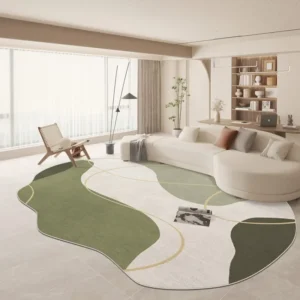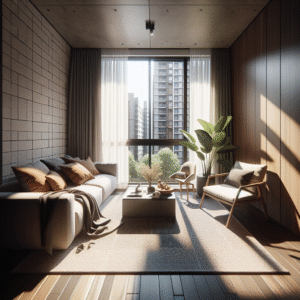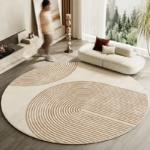Opening Section
Welcome to your ultimate guide on optimizing air quality for healthier homes. Did you know that indoor air can be up to five times more polluted than outdoor air? In our fast-paced lives, we often overlook this vital aspect of health. Poor air quality can lead to various health issues, from allergies to chronic respiratory diseases. This article will help you understand the importance of air quality and provide actionable tips, tools, and strategies for creating a cleaner living space.
In the upcoming sections, you will learn about common indoor air pollutants, how to identify them, the benefits of improving air quality, effective methods and tools, and the impact on overall health and well-being. Let’s dive into the world of air quality optimization!
Common Indoor Air Pollutants
Indoor air pollutants can significantly affect your health and comfort. Here are some of the most common culprits:
- Dust Mites – Tiny organisms found in bedding and upholstered furniture.
- Volatile Organic Compounds (VOCs) – Emitted from paints, cleaners, and building materials.
- Mold – Thrives in damp areas and can cause respiratory issues.
- Pet Dander – A major allergen for many households.
- Carbon Monoxide – A colorless, odorless gas that can be deadly.
- Radon – A naturally occurring gas that can enter homes from the ground.
How to Identify Indoor Air Pollutants
Identifying air pollutants in your home involves a combination of observation, tools, and tests:
Observation
Start by looking for signs such as unexplained allergies, persistent odors, and visible mold. Keeping a journal of symptoms can help correlate them with specific areas or activities within your home.
Air Quality Monitors
Investing in an air quality monitor can provide you with real-time data on various pollutants, including particulate matter, CO2 levels, and humidity.
Professional Testing
If you suspect serious problems, consider hiring professionals for a comprehensive air quality assessment.
Benefits of Improving Air Quality
Enhancing air quality in your home can lead to numerous health advantages, such as:
- Reduced Allergy Symptoms – Cleaner air means fewer allergens and irritants.
- Better Respiratory Health – Lower incidence of asthma and chronic respiratory diseases.
- Increased Productivity – Cleaner air has been linked to higher cognitive function and concentration.
- Improved Sleep Quality – A less polluted bedroom environment can lead to better sleep.
- Longevity – Long-term exposure to pollutants can shorten life expectancy.
Methods and Tools for Air Quality Optimization
There are several methods and tools you can use to effectively optimize air quality:
Air Purifiers
Air purifiers with HEPA filters are great for removing particulate matter, pollen, and dust. Be sure to choose the right size for your room.
Humidifiers and Dehumidifiers
Maintaining the right humidity level (30-50%) can prevent mold growth and comfort issues.
Houseplants
Certain houseplants can naturally filter pollutants from the air, such as spider plants and snake plants.
Regular Cleaning
Dust and vacuum regularly, focusing on carpets, upholstery, and curtains to minimize allergens.
Ventilation Strategies
Opening windows and using exhaust fans can help improve air circulation. Consider using energy-efficient windows that reduce drafts.
The Impact of Air Quality on Health
The connection between air quality and health is profound. Poor air quality can:
- Increase the risk of heart diseases.
- Exacerbate respiratory illnesses.
- Lead to cognitive impairments and mental health issues.
Understanding these impacts can motivate you to take proactive steps in improving your air quality.
Case Studies in Air Quality Improvement
Case Study 1: Family Residence
A family living in a city apartment noticed a spike in allergies. After installing a HEPA air purifier and maintaining a regular cleaning schedule, their symptoms reduced significantly.
Case Study 2: Office Building
A corporate office faced complaints about poor air quality. By implementing a professional air quality audit and improving ventilation, employee satisfaction increased by 30%.
Conclusion & Next Steps
Optimizing air quality for healthier homes is not just a choice; it’s a necessity. With the right tools and methods, you can significantly enhance your indoor environment, leading to improved health and well-being. Remember, paying attention to indoor air quality is a worthy investment for you and your loved ones.
For further information, check out our related articles on common indoor pollutants and effective air quality tools. Together, we can create healthier living spaces!
Frequently Asked Questions
What are the main sources of indoor air pollution?
Common sources include dust mites, pet dander, mold, VOCs from paints, and tobacco smoke.
How can I improve my home’s air quality?
You can improve air quality by using air purifiers, maintaining humidity levels, and ensuring proper ventilation.
What are the health effects of poor air quality?
Poor air quality can lead to respiratory issues, allergies, and chronic diseases such as asthma and heart disease.
How often should I change my air purifier filter?
It’s generally recommended to change filters every 3-6 months, depending on usage.
Can houseplants improve indoor air quality?
Yes, many houseplants can naturally filter pollutants and improve air quality.
What humidity level is ideal for indoor air quality?
The ideal indoor humidity level is between 30% and 50% to prevent mold and discomfort.
Content Disclaimer
Information provided in this article is for educational purposes only. It is not intended as medical advice. For health concerns, please consult healthcare providers. Results may vary based on individual circumstances.
Categories
- Accent Walls & Ceilings (14)
- Art Curation & Gallery (29)
- Bedding Style Trends (42)
- Bedroom Makeover (34)
- Bohemian & Eclectic Styles (14)
- DIY & Budget-Friendly Decor (13)
- Eco-Friendly Design (14)
- Furniture Care (33)
- Home Decor & Design Ideas (103)
- Home Wellness Spaces (14)
- Integrated Outdoor Living (13)
- Kids and Nursery Decor (14)
- Living Room Decor (34)
- Minimalist & Japandi Style (17)
- Mix & Match Techniques (33)
- Modern & Contemporary Design (13)
- Rug Sizing & Placement (33)
- Seasonal Home Decor (36)
- Small Space Solutions (18)
- Wall Art & Painting Tips (36)
Recent Posts
Recent Comments
Archives
Product Gallery
-
 Large Area Green Rugs for Bedroom Nordic Living Room Decoration Shaped Carpet Irregular Plush Lounge Rug Home Thick Washable Mat Rated 5.00 out of 5$57.07 – $359.83Price range: $57.07 through $359.83
Large Area Green Rugs for Bedroom Nordic Living Room Decoration Shaped Carpet Irregular Plush Lounge Rug Home Thick Washable Mat Rated 5.00 out of 5$57.07 – $359.83Price range: $57.07 through $359.83 -
 Nordic Style Rugs for Bedroom Morandi Living Room Decoration Carpet Large Area Geometry Lounge Rug Home Cloakroom Non-slip Mat Rated 5.00 out of 5$40.98 – $620.81Price range: $40.98 through $620.81
Nordic Style Rugs for Bedroom Morandi Living Room Decoration Carpet Large Area Geometry Lounge Rug Home Cloakroom Non-slip Mat Rated 5.00 out of 5$40.98 – $620.81Price range: $40.98 through $620.81 -
 Irregular Shapes Living Room Decoration Carpet Modern Style Rugs for Bedroom Home Thicken Plush Rug Fluffy Soft Lounge Floor Mat Rated 4.75 out of 5$58.00 – $360.83Price range: $58.00 through $360.83
Irregular Shapes Living Room Decoration Carpet Modern Style Rugs for Bedroom Home Thicken Plush Rug Fluffy Soft Lounge Floor Mat Rated 4.75 out of 5$58.00 – $360.83Price range: $58.00 through $360.83




























